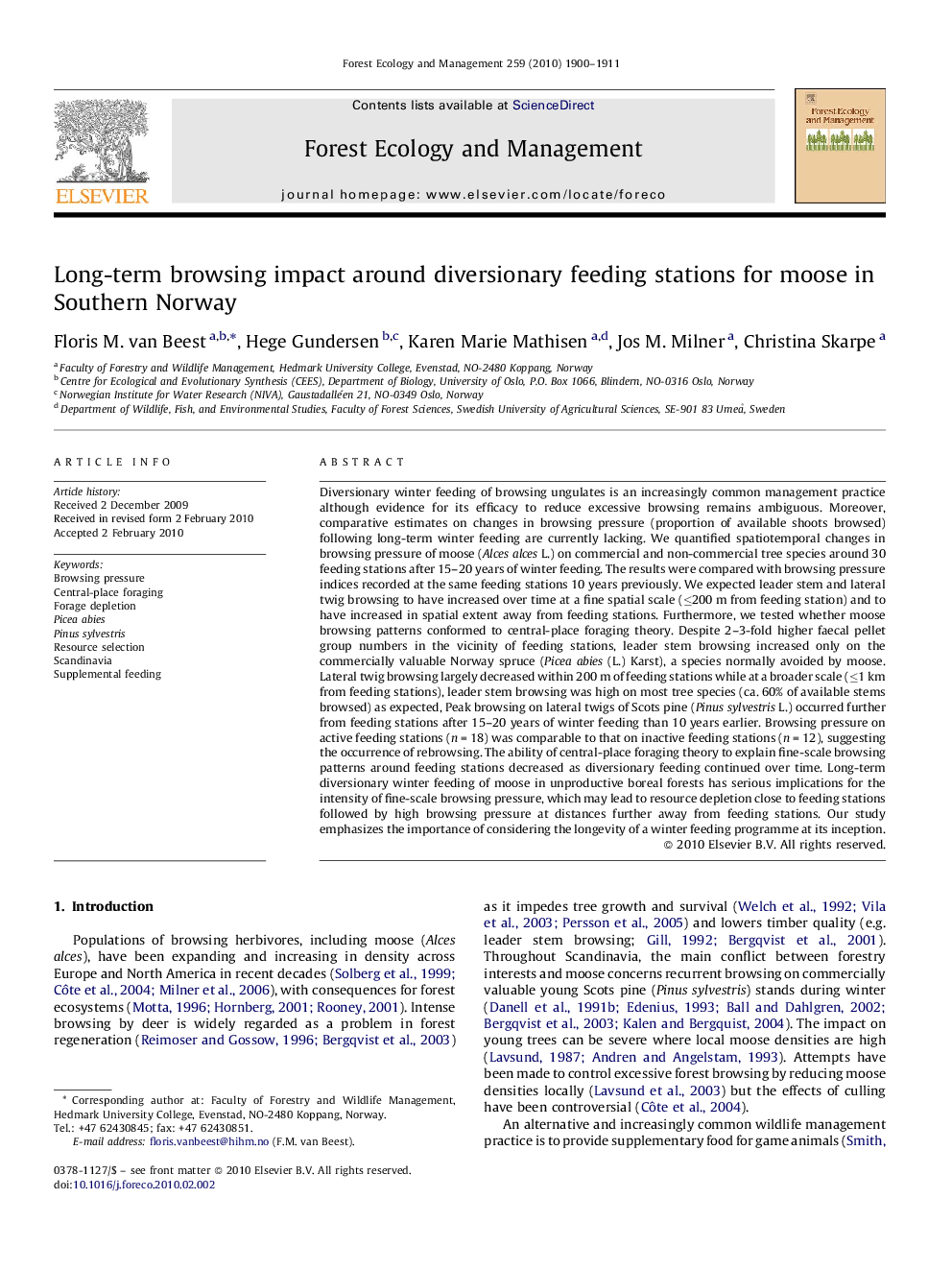| کد مقاله | کد نشریه | سال انتشار | مقاله انگلیسی | نسخه تمام متن |
|---|---|---|---|---|
| 88260 | 159293 | 2010 | 12 صفحه PDF | دانلود رایگان |

Diversionary winter feeding of browsing ungulates is an increasingly common management practice although evidence for its efficacy to reduce excessive browsing remains ambiguous. Moreover, comparative estimates on changes in browsing pressure (proportion of available shoots browsed) following long-term winter feeding are currently lacking. We quantified spatiotemporal changes in browsing pressure of moose (Alces alces L.) on commercial and non-commercial tree species around 30 feeding stations after 15–20 years of winter feeding. The results were compared with browsing pressure indices recorded at the same feeding stations 10 years previously. We expected leader stem and lateral twig browsing to have increased over time at a fine spatial scale (≤200 m from feeding station) and to have increased in spatial extent away from feeding stations. Furthermore, we tested whether moose browsing patterns conformed to central-place foraging theory. Despite 2–3-fold higher faecal pellet group numbers in the vicinity of feeding stations, leader stem browsing increased only on the commercially valuable Norway spruce (Picea abies (L.) Karst), a species normally avoided by moose. Lateral twig browsing largely decreased within 200 m of feeding stations while at a broader scale (≤1 km from feeding stations), leader stem browsing was high on most tree species (ca. 60% of available stems browsed) as expected, Peak browsing on lateral twigs of Scots pine (Pinus sylvestris L.) occurred further from feeding stations after 15–20 years of winter feeding than 10 years earlier. Browsing pressure on active feeding stations (n = 18) was comparable to that on inactive feeding stations (n = 12), suggesting the occurrence of rebrowsing. The ability of central-place foraging theory to explain fine-scale browsing patterns around feeding stations decreased as diversionary feeding continued over time. Long-term diversionary winter feeding of moose in unproductive boreal forests has serious implications for the intensity of fine-scale browsing pressure, which may lead to resource depletion close to feeding stations followed by high browsing pressure at distances further away from feeding stations. Our study emphasizes the importance of considering the longevity of a winter feeding programme at its inception.
Journal: Forest Ecology and Management - Volume 259, Issue 10, 30 April 2010, Pages 1900–1911